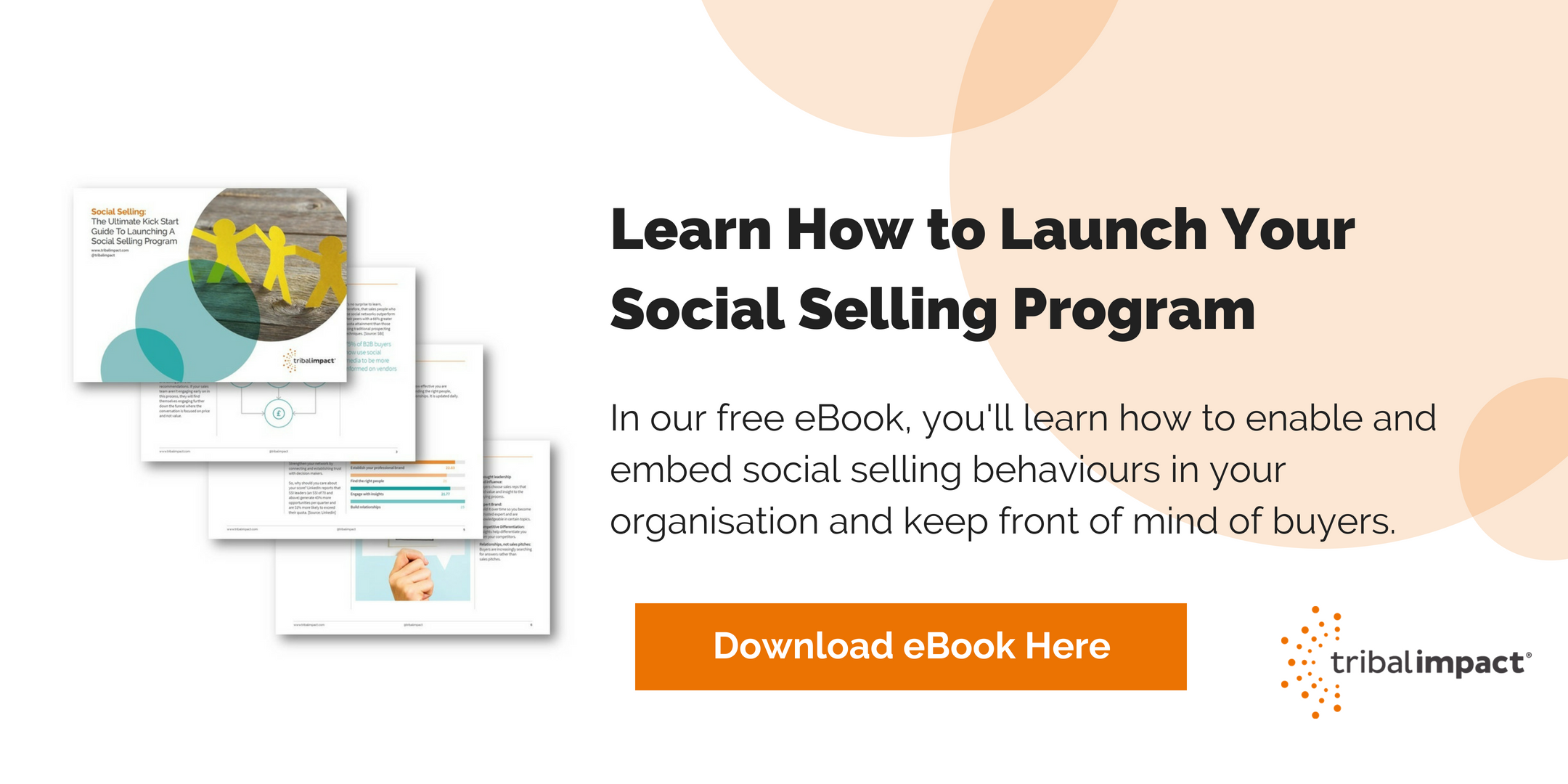Now the hype is over and GDPR is the new normal, what can we gain from the benefit of hindsight? Perhaps, that anticipation is always a little more frenzied than it needs to be? Or, maybe you’ve used GDPR as a great excuse to have a clear out of unwanted or out-of-date contacts?
Whatever your truth, at Tribal, we found that we stopped thinking ‘database’ and started thinking ‘fanbase’.
The majority of pre-GDPR hype was around consent for online marketing. However, many of the requirements that came into force were simply asking us to review why we were sending information to people. The focus is now on adding value; sharing useful and relevant information with the right audience and doing so with a reasonable frequency (ie avoiding ‘spamming’).
In fact, the onset of GDPR has proven to be great news for social media marketing and networking.
Social Selling has shared values and priorities with the new legislation: its main aim is to build and nurture relationships and share information relevant to the individual buyer.
By focusing time and attention on creating a rich feed of information, articles, shares and news, social sellers can become a ‘go-to’ expert in their field, winning followers as and when this information is relevant and influencing people as they are ready to make their buying decisions.
Compare this to the average email marketing campaign.
- It’s very one-sided: it is sent out when the originator decides the time is right;
- It is received by a broad cross-section of contacts, who may all be at different stages of – or not even a part of – the buying cycle;
- It arrives in an email inbox and is rarely very interactive (and may or may not be opened);
- Involvement is black and white – you’re either subscribed, or you’re not;
- It focuses on one topic, product or campaign.
It’s no wonder that Mailchimp reports an average open rate (across all industries and sizes/types of business) of just under 21% and a click rate (which might indicate interest or action) of just 2.43%. With social selling offering the opportunity to nurture deeper relationships with potential customers and create and curate great content to keep followers engaged and interested, it’s no surprise that the stats are healthier: according to Forbes, sales reps using social media as part of their sales techniques outsell 78% of their peers.
So, why the difference? Well, as we’ve said before, the main factor here is choice. Buyers don’t want overt selling any more; the buying cycle has changed. According to Neilsen, the amount of content we consume has gone from two hours a day (in the 1920s) to nearly 11 hours per day today. Somehow, we need to control what we are looking at and when.
Consider the main differences between a database and a fanbase:
| Fanbase: | Database: |
| Social media contacts or followers | Lists of potential prospects |
| Requested or agreed to linking up | Added from previous encounters (networking, business card exchange, referral, existing business) |
| Control over own news feed | Can subscribe or unsubscribe to marketing emails |
| Opportunity for ongoing interaction | Information received, no two-way option |
| Choice of involvement | No choice (initially) |
This shows the difference between push (traditional, outbound email marketing) and pull (relationship-based, inbound marketing). GDPR provided the perfect springboard to move from outbound to inbound; to transform sales processes and commit our businesses to improved engagement, a better reputation and greater customer trust.
It’s clear that building your brand (and your people) as the purveyor of thought leadership and expertise is becoming a necessity. And, if you needed any further convincing, here’s what LinkedIn has to say: 90% of B2B buyers are more likely to engage with sales professionals who are viewed as thought leaders in their industry.
It’s time to create a fanbase, not a database. By adopting Social Selling behaviours in your workforce, building relationships and interacting with sales prospects by answering questions and providing useful content until the prospect is ready to buy.
